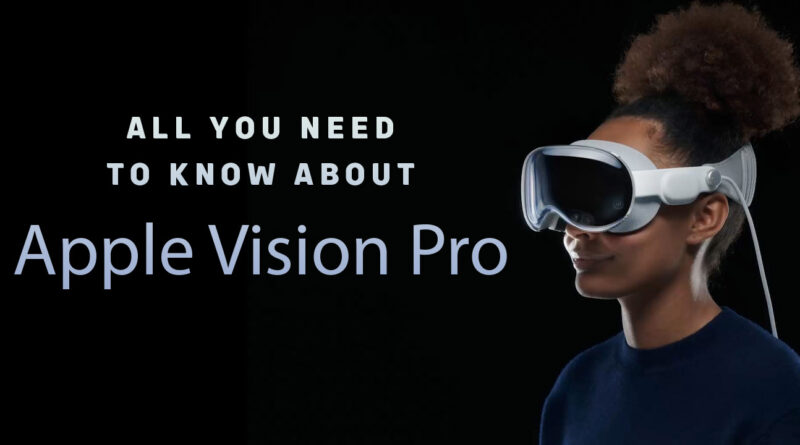Apple Vision Pro Big Reveal
The big reveal at Apple’s Worldwide Developer’s Conference (WWDC) this year was the long awaited, hotly anticipated debut VR/AR device from the Cupertino tech giant. Apple Vision Pro brings many advanced features to the VR/AR marketplace and, as is usually the case with Apple products, sports a sleek, expertly crafted design that focuses on ease of use, a gentle elegance, and naturalistic feel.
A New Era for Apple
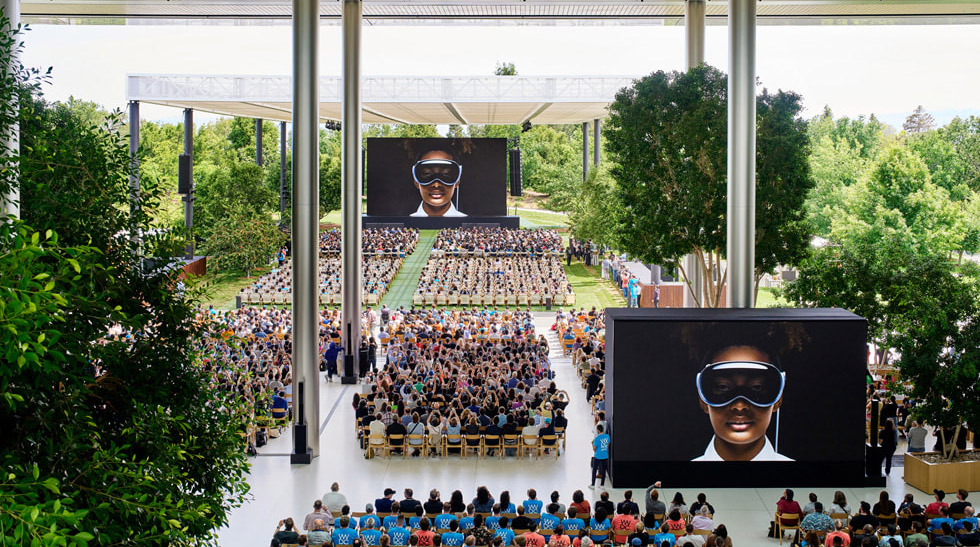
Among the impressive features that will be part of Apple Vision Pro is a dual-chip processing unit. Apple’s M2 chip will handle the main processing tasks while an R1 will be devoted to handling the many inputs with an eye toward minimizing latency, motion sickness, and disorientation.
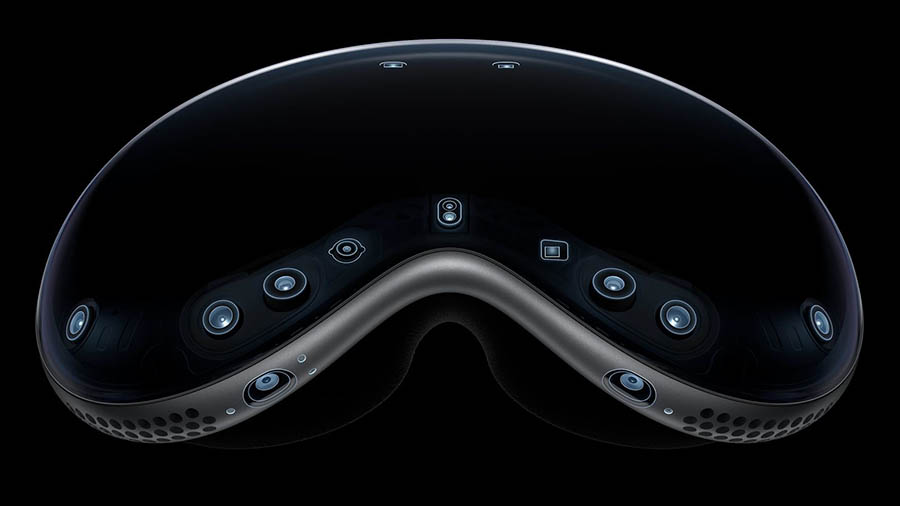
Speaking of inputs, Apple Vision Pro boasts 12 cameras, 6 microphones, and 5 sensors, many of them designed to better track a user’s head, face, and eye movements. Facial and eye tracking will be key to Apple’s success with this device. Apple’s dedication to security and privacy means encrypted face and eye data won’t be passed on to third parties – or even readable by Apple. Any photo or video capturing done by a user will come with a visual indicator so those potentially being recorded will be aware. Vision Pro’s ability to capture 3D volumetric video is also a big selling point for the device, as giving user’s such a tool has been difficult for other VR/AR device creators to manage.
visionOS
Along with the hardware elements of Apple Vision Pro comes a bold new operating system in the Apple tradition. Dubbed “visionOS,” the operating system brings with it some distinctly new takes on VR/AR use. EyeSight uses the front external surface of Vision Pro as a video view of the user’s eyes, allowing them to better communicate with those in their physical environment without removing the headset. EyeSight will also allow a user to see environmental elements such as other people pop into their virtual viewing space and keep them firmly connected to their real world, a concern many have had about increasingly immersive VR.
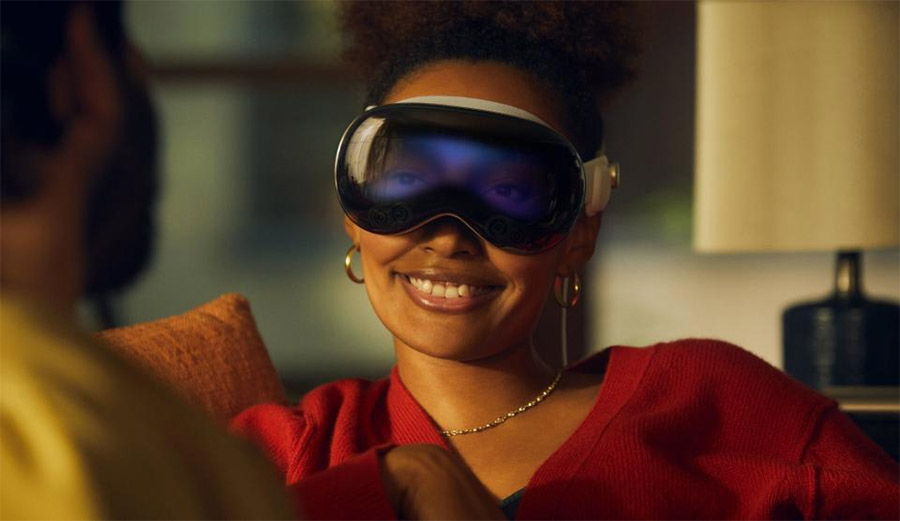
EyeSight will be joined by Persona in creating a new and increasingly personal approach to VR/AR productivity. Persona, an animated avatar, digitally created from scans of a user’s face, will represent that user in 3D VR video calls and various other virtually enabled social interactions.
Nuts and Bolts
Behind this new take on VR/AR tech is an impressive spec sheet. Undoubtedly this is a major reason for its $3500 USD price tag but it could be worth every cent. On paper, this is certainly an impressive device and initially usage reports suggest it remains impressive once in the hands of a user.
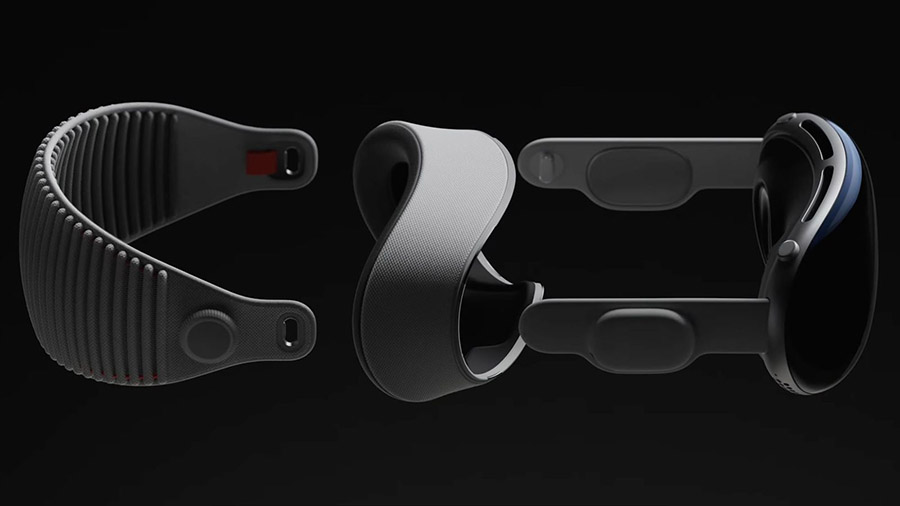
The aforementioned M2 and R1 chips are joined by a customizable spatial audio system, memory will be provided by 1GB low-latency DRAM, an external battery pack suppling 2 hours of use from full charge, hand tracking and gestural command input, can connect to keyboards, mice, trackpads, and the like for further control, and can be paired with both desktop and mobile Apple devices for an enormous range of uses. Apple has been using the term “spatial computing” to best describe what Apple Vision Pro brings to the world and, given its powerful specs and wide range of supported software, it’s not a term that is misapplied.

